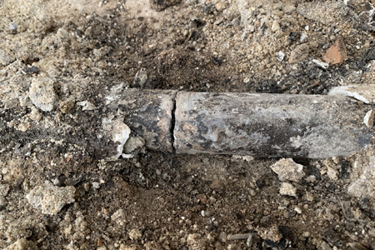Lead And Copper Rules: Where Are We Now?
By Christian Bonawandt

It’s been several months since the U.S. EPA’s Lead and Copper Rule Revisions (LCRR) went into effect on Oct. 16, 2024. However, just days prior, on Oct. 8, the EPA approved yet another update, the Lead and Copper Rule Improvements (LCRI). While water utilities knew this was coming, it still introduces a realm of confusion and uncertainty regarding what aspects of the LCRR are still applicable and which ones are not. This article aims to help readers understand where we are now with lead and copper rules, as well as touch which factors could complicate or change these rules moving forward.
Where Should You Be Right Now?
As of this writing, water systems must have met several requirements, including those stemming from the 2021 LCRR that were retained in the final LCRI, as well as new LCRI requirements. Current LCRR rules that water utilities must be in compliance with include:
Initial Service Line Inventory: Water systems must have developed an initial lead service line (LSL) inventory, that includes all service lines, regardless of ownership, categorized as lead, non-lead, galvanized requiring replacement (GRR), and unknown. This inventory would have been submitted to the state by October 16, 2024.
Notification Of Service Line Material: Utilities should be in the process of providing initial and annual notifications of known or potential lead service lines to those served by them, and include revised lead health effects language in these notifications.
Tier 1 Public Notification (PN): Any water system that has had a lead action level exceedance must comply with the Tier 1 public notification requirements, alerting affected end users within 24 hours of learning of the exceedance.
The recently finalized LCRI requirements add several other rules which water systems must comply with, such as:
Ongoing Inventory Updates: Utilities are expected to continuously update their initial inventory to create a baseline inventory by the LCRI compliance date, although they have until November 1, 2027. This inventory must include any new information on service line materials and connector materials.
LSL Replacement Plan: A water system with at least one lead, GRR, or unknown service line must create a service line replacement plan by the 2027 LCRI compliance date.
Filter Plan: If a water system has exceeded the lead action level for the second time in a rolling five-year period, then they are required to establish a plan to provide filters to affected users. This plan has to be submitted to the state no later than 60 days after the second exceedance.
Schools And Child Care Facilities List: Community water systems must submit a list of the schools and licensed childcare facilities they serve or provide certification that they do not serve any.
What Do You Not Have To Do (Yet)
While the LCRI includes a great deal of other requirements, there are several that water systems have time to get ready for compliance.
LSL Replacement: Although water systems must have a plan for full LSL replacement, the actual work does not have to start until November 1, 2027, and completion is not expected until 2037. Keep in mind that some water systems may be granted a deferred deadline or subjected to a shortened deadline, depending on the circumstances.
Identify Unknown Service Lines: Water systems are not yet obligated to have identified the material of all unknown service lines until the November 2027 compliance deadline.
Non-Lead Validation: Similarly, water systems need not have fully validated all non-lead service lines until the same 2027 date.
What Uncertainties Exist?
Several factors have the potential to impact the enforcement of the LCRI and even the LCRR as they stand now. The first and most obvious has been the new U.S. Presidential Administration. Only a few weeks old, there have already been a bevy of changes to various federal rules and proposals, including those regarding PFAS limits in industrial wastewater (drinking water rules are still in place). Lead pipe replacement rules are already being looked at, although the LCRI still stands as of publication date. Similarly, changes in budgets and funding could impact or slow down water utilities’ ability to comply with the LCRI, even if the rules remain intact.
Also worth considering has been the lawsuit filed by the AWWA in late 2024 seeking to halt and revise the LCRI. The organization has stated that while they support the goals of the LCRI, specific deadlines and other requirements place too great a burden on most water systems. Although too early to know, the outcome of this lawsuit could result in a loosening or modification to various rules, particularly regarding LSL replacement.
